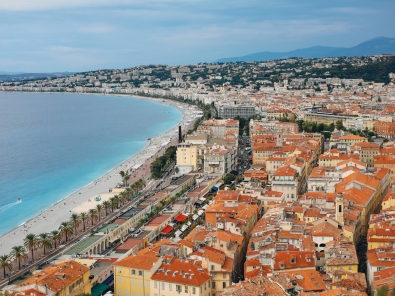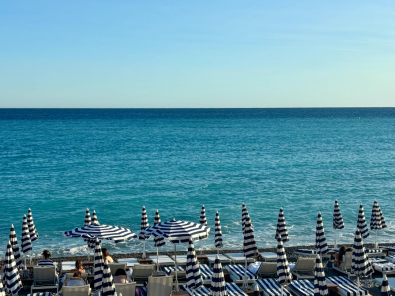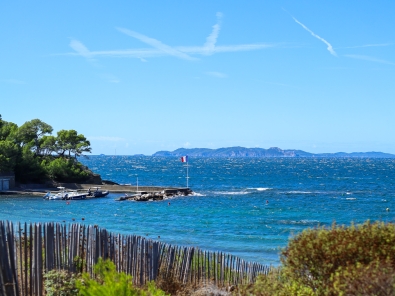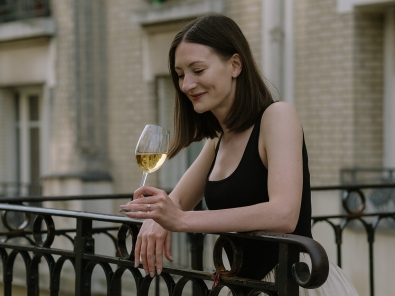The final sips of summer 2025.
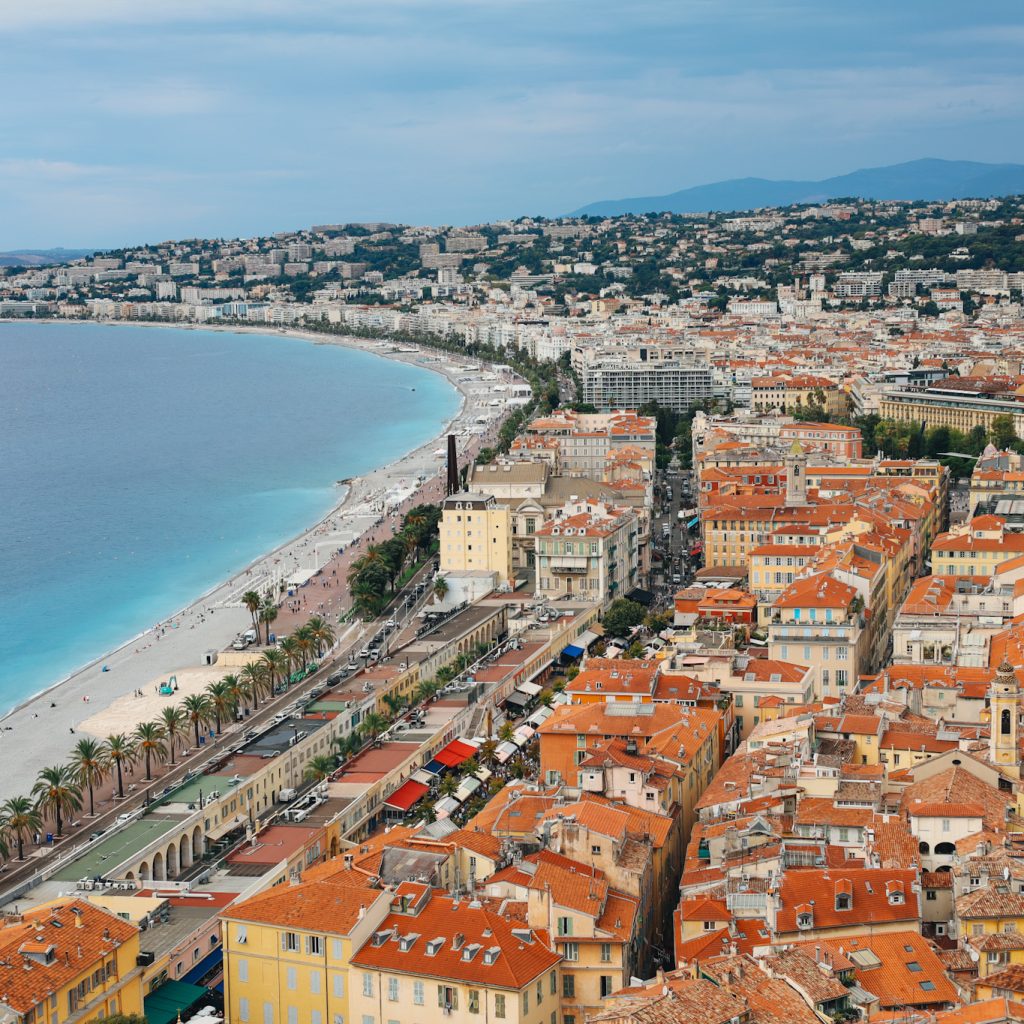
The term “la rentrée” was initially created to refer to that time of year when the kids go back to school. In France, this is usually early-mid September, depending on the calendar. But in the last couple of decades, its meaning has widened to include anyone returning to work, routine, and schedules in September after a summer of lounging and holidaying. Normally, this doesn’t really describe me, but this year, it did. And boy was it an extreme rentrée. Anyone else feel like there were simultaneously too few hours in the day and too many all at the same time? If exhaustion gripped you like it gripped me, here’s hoping October is kinder to all of us. This month felt so long that, in re-reading it, I asked myself, “Did I really drink that in the same month as I’m writing this intro?!” Yes, really. La rentrée had some crazy energy this year. Here’s what I drank to get through it.
WINE #1: VinoCBlanc, Vin de France, Domaine Vinoceros, 2022 (18/20)
Where I had it: On my last night in Nice at one of the city’s best restaurants (that I happened upon almost entirely by accident), Lavomatique. What an AMAZING place. It’s a tiny hole-in-the-wall that used to be a laundromat and has been transformed into what I am sure is one of the most delicious restaurants in Nice – and perhaps in France entirely. If you’re planning a trip to Nice, make sure you check this one out (and make a reservation beforehand!).
How much a glass cost me: 10€ off the by-the-glass menu.
How much a bottle would cost you: 15€ or so in France. Sadly, I don’t think this wine is currently imported to the U.S.
OVERALL COMPOSITE SCORE: 18/20
- DRINKABILITY SCORE: 4/5 – What a great, unique wine for a restaurant list! There’s a lot of layers here and while that sometimes means a wine can feel overbearing with a meal, this one had a note to offer for every small plate I ate. As my waiter told me, it’s a “dry dry dry” Muscat. Notes of white peach and yellow pear embrace you on the palate but the thing that sets this wine apart is the texture. Round and a little bitter, it balances out foods with high acidity and enhances cream sauces delightfully. It won’t be a wine for everything or every moment, but paired with some high-quality, modern Mediterranean food? Excellent.
- PAIRABILITY SCORE: 5/5 – This is a wine for food, no question. It’s bright, complex, and unique. Because it’s not one-dimensional, it paired with so many things beautifully and could probably even go with dessert if I wanted that, too. A major win!
- WALLET-ABILITY SCORE: 4/5 – It’s a great price for the wine it is, but it does lose a point for not yet being accessible stateside (I get it, and often these reviews turn into wishful thinking).
- THE X FACTOR SCORE: 5/5 – The Vinoceros founder and winemaker had just one goal in mind when he started the brand in 2014: share his love for wine without negatively impacting people and planet. At the moment, the brand doesn’t own its own land but purchases grapes from producers that only farm organically and/or biodynamically and prioritizes paying farmers a good price for their products (which unfortunately, can be rare in the négoce business). It’s the protection of both people and land that gives it a 5/5 score. Here’s hoping they can start to grow their own vines someday and keep the momentum going!
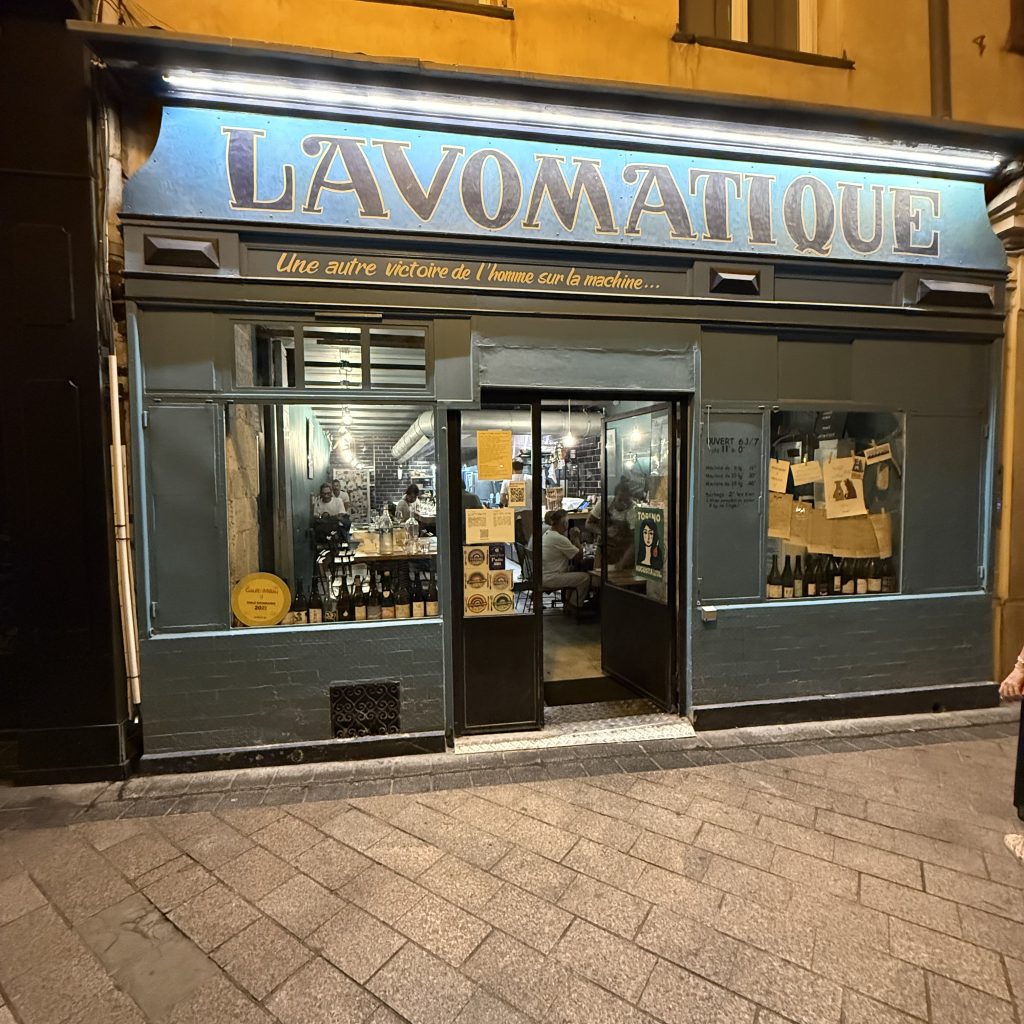
WINE #2: Apanage Brut 1874, Champagne Pommery (17.5/20, Millesima)
Where I had it: At the champagne bar at this year’s New York City Armory Show. Champagne Pommery has been the official bubbly sponsor for a number of years now, but they aren’t just paying lip service to the industry. Every year, they select one artist to receive the Pommery Prize, which includes a $10,000 bursary and an invitation for the artist to install an exhibit at the domaine in Champagne. A beautiful tradition! I love when art and wine come together.
How much a glass cost me: $0. I was invited to this event on behalf of the brand.
How much a bottle would cost you: $99. It’s steep, but that is sadly the nature of Champagne these days. (I think that prices are going to crash at some point and the region will have to start all over again… but for the moment that seems a ways off.)
OVERALL COMPOSITE SCORE: 17.5/20
- DRINKABILITY SCORE: 5/5 – She’s a beaut. No ifs, ands, or buts about it. It’s like eating a roasted white peach that’s been lightly brushed with salted, melted butter. Fine bubbles and a long finish. Pommery doesn’t mess around.
- PAIRABILITY SCORE: 5/5 – I unfortunately didn’t get the opportunity to pair food with this wine but there’s no doubt the usual suspects (sushi, caviar on blinis, popcorn, or anything in a cream sauce) would do nicely. Here’s hoping I’ll get to try it again with a nice meal to prove the theory!
- WALLET-ABILITY SCORE: 3.5/5 – Oy, these prices in Champagne are just getting crazier by the minute. It’s a beautiful cuvée that’s far from entry-level but I wish it were more accessible – particularly because it does not have premier or grand cru status. Even a $75 cap would feel better: sophisticated yet affordable. Oh well. A girl can dream.
- THE X FACTOR SCORE: 4/5 – In 2020, Vranken Pommery announced it would be converting all of its vineyards to organic practices. No small feat for a large holding company whose vines span multiple subregions. I’d like to see them take it further because they are so significant in the region, but organic practices are not everything. When coupled with the fact that the aim of the Pommery Prize is to do good, promote artists around the world, and give artists from underrepresented groups a gallery on the world stage, they earn four points here – easily.
WINE #3: Bourgogne Aligoté, Edmond Cornu, 2022 (15/20, CoolVines)
Where I had it: On date night at one of Jersey City’s newest restaurants, Maxwell Alley. It’s a beautifully-designed spot off the beaten track with a good wine list, thanks in part to another Jersey City small business, CoolVines. That being said, the food needs some work and the wines feel like they’re reaching to be “trendy”. Here’s hoping that they’re just ironing out the kinks. We hope to give it a second chance once they’ve done just that.
How much a glass cost me: $18. Steep for a glass of regional Burgundy. Welcome back to NYC restaurant pricing, the bane of my existence.
How much a bottle would cost you: $30. Also a little steep for what this is. I love Aligoté and the fact that regional producers are reinvesting in it, but it should be a lot closer to $20 than $30.
OVERALL COMPOSITE SCORE: 15/20
- DRINKABILITY SCORE: 4/5 – It’s a good wine; a solid Aligoté with those classic notes of lemon-lime, a round mouthfeel, and a bitter edge at the end. Do I think it’s good enough quality to justify the price? Not really. Do I think it’s a wine that should be featured on a wine list that was much anticipated for being “cool” and “edgy”? Also not really. Aligoté is underrated and its resurgence on lists lights me up from the inside, but based on the one-dimensional glass I tasted for $18, I don’t think it delivered what the founders of the restaurant were after.
- PAIRABILITY SCORE: 3.5/5 – It’s a solid wine for food, on par with a decent Chablis or Sancerre. A good French white that’s not going to offend anyone and pairs with enough things on the menu that it makes sense at a restaurant. It was a bit of a miss with the pasta dish I ordered, but that’s really only because the watery sauce had split and the pasta was tough. Not expressly the wine’s fault – but disappointing nonetheless.
- WALLET-ABILITY SCORE: 4/5 – I’ve already alluded to this one a few times in this review but I do think that by the glass pricing is just off and the by the bottle pricing is a little, too. Land in Burgundy is getting harder to purchase and maintain by the minute and the prices of creating within the appellation system gets steeper – I get it (not to mention the now ongoing trade war). I’d love to see this come down a bit.
- THE X FACTOR SCORE: 3.5/5 – It’s a small, family-owned estate with 16 or so hectares, but outside of an HVE certification (level not listed), there’s very little information about ecological or CSR efforts, so it’s staying at a 3.5.
WINE #4: “Cuvée des Caudalies”, Blanc de Blancs, Champagne Grand Cru, De Sousa (18/20, Vins Rare)
Where I had it: At home on a Friday night. We ordered sushi from Domo Domo and celebrated this “goal bottle” – my last of the year. The goal in question was to spend three weeks in France – normally a pipe dream given the way American PTO is set up – but because I had some time off in between jobs, I was able to achieve it. Unexpected, but a very, very sweet end to this year’s “goal bottle” tradition.
How much a bottle cost me (and would cost you): $95. I bought this particular bottle on site when I was last in Champagne, but there are now a few boutiques that sell it stateside, like Vins Rare and Woodland Hills Wine Company.
OVERALL COMPOSITE SCORE: 18/20
- DRINKABILITY SCORE: 5/5 – Gold like autumn light, this is a complex Champagne created with 50% solera wines and 100% oak ageing. It’s not – in general – the type of Champagne that I go for, but there is something truly, truly special about it. Luscious layers of white flowers, lemon, orange blossom, and wood intermingle on the palate and linger for minutes. If you’re looking for a wine to unwind with, to celebrate, or to pair with an exceptional meal, it’s gotta be this one.
- PAIRABILITY SCORE: 4/5 – There’s something dazzling about Champagne and high-end sushi. Having tried multiple combinations of each at this point, I think it’s one of my favorite pairings. There is just something about the way well-made soy or teriyaki sauces speak to Champagne that just work together. I’d love to go to a masterclass that pairs variety of sushi with a wide breadth of Champagne – I’d leave in bliss!
- WALLET-ABILITY SCORE: 4/5 – For a grand cru champagne, created biodynamically and with care from one of Champagne’s leading growers, I give it a 4/5. Could be a touch more affordable, but this is a special occasion Champagne that is absolutely worth the cost.
- THE X FACTOR SCORE: 5/5 – It’s no secret that I have a soft spot for Champagne De Sousa. They were one of the first champagnes I tried and loved immediately, thanks in large part to their finesse and elegance. The house has been organic since 2010 and converted to biodynamics shortly thereafter. They famously use horses in the vineyard, hand-riddle their bottles, and have invested in inclusive wine experiences by offering tours with a sign language interpreter so deaf and hard-of-hearing consumers can enjoy the beauty of the world of Champagne. They’re doing everything right.
WINE #5: “Les Pierres Plates”, Reuilly, Domaine de Reuilly, 2024 (18/20, Kermit Lynch)
Where I had it: I opened this originally for a photoshoot for the Centre Loire region, but had another glass later that week, paired with takeout from a new-to-me Chinese spot. Honestly not sure why I never thought of this pairing before but it was gold, so I’ll definitely be returning to it.
How much a bottle cost me (and would cost you): $26. I didn’t realize this but Kermit Lynch has an e-shop which makes purchasing wines from them as a consumer so much easier!
OVERALL COMPOSITE SCORE: 18/20
- DRINKABILITY SCORE: 4/5 – A delight. Lemon and stone and crisp acidity. I would probably mistake this for a Chablis if I’d tasted it blind. An absolute steal for the price and what you’re getting. Don’t sleep on those little appellations from the Loire, folks! The words might look crazy but name recognition is hardly the full story of any wine from France, and especially not nowadays!
- PAIRABILITY SCORE: 4/5 – This was an unexpected win with my Chinese food, especially the scallion pancakes (my favorite guilty pleasure).
- WALLET-ABILITY SCORE: 5/5 – $26 for this wine is an insane bargain. Snap it up fast before the price goes up!
- THE X FACTOR SCORE: 5/5 – Small, family-owned, biodynamic domaine. This one gets everything right. Additionally fascinated by trees, the estate has entered into permaculture and uses literal French oak from the property to create its wine barrels. Very much a circular, all-in approach that minimizes environmental impact. Love to see it!
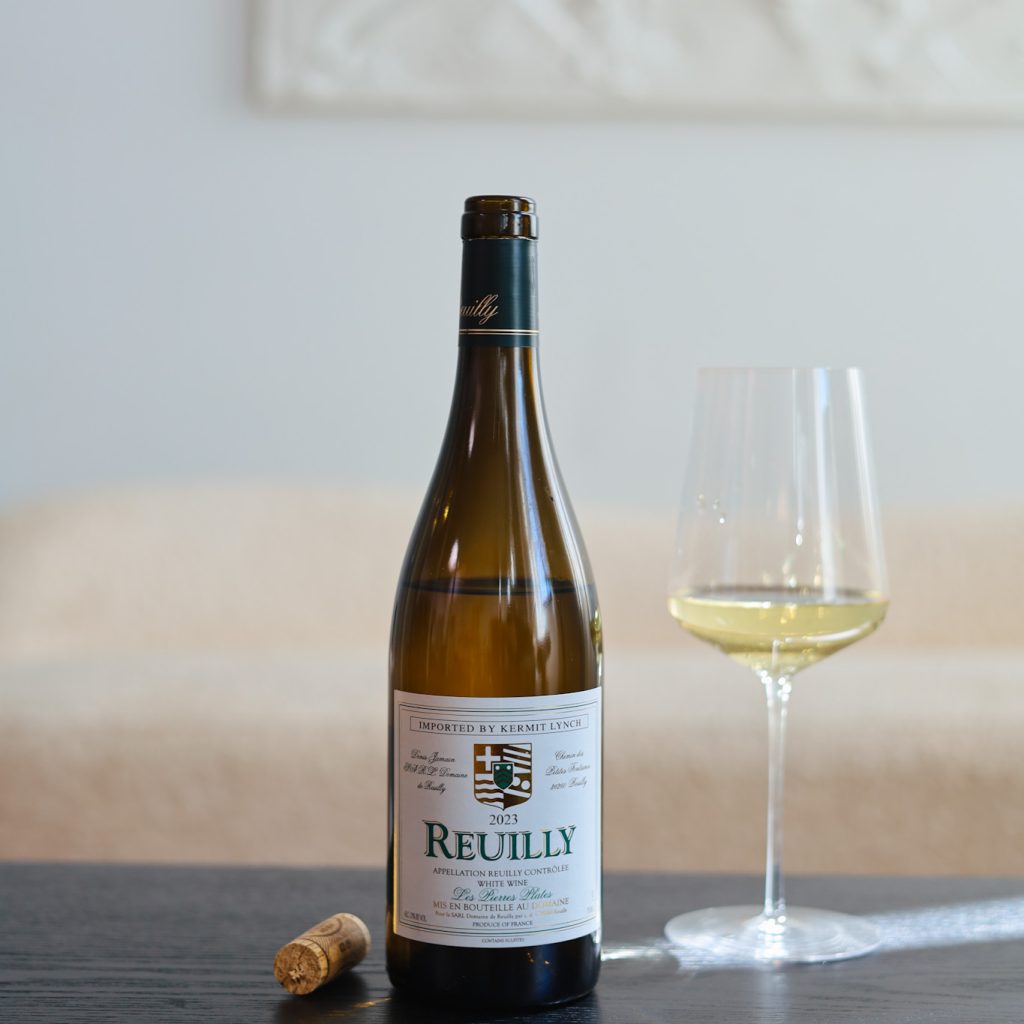
In looking back at this month, I’m surprised at myself. Normally by September, I’ve started to crave those transitional reds and darker rosés, but my new love for summer seems to have kept me in a bubbly, white wine state of mind. See you next month for what I’m sure will be a larger, more diverse list of wines.
Looking for more wine reviews? Check out the August Edition or my methodology post on Unfined + Unfiltered. Enjoy, santé !
